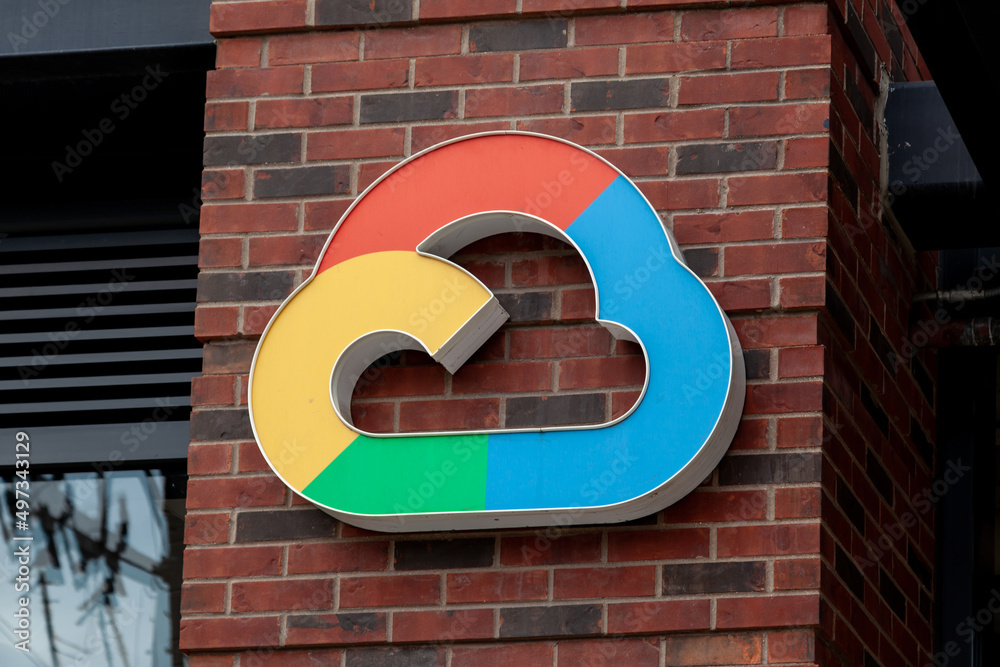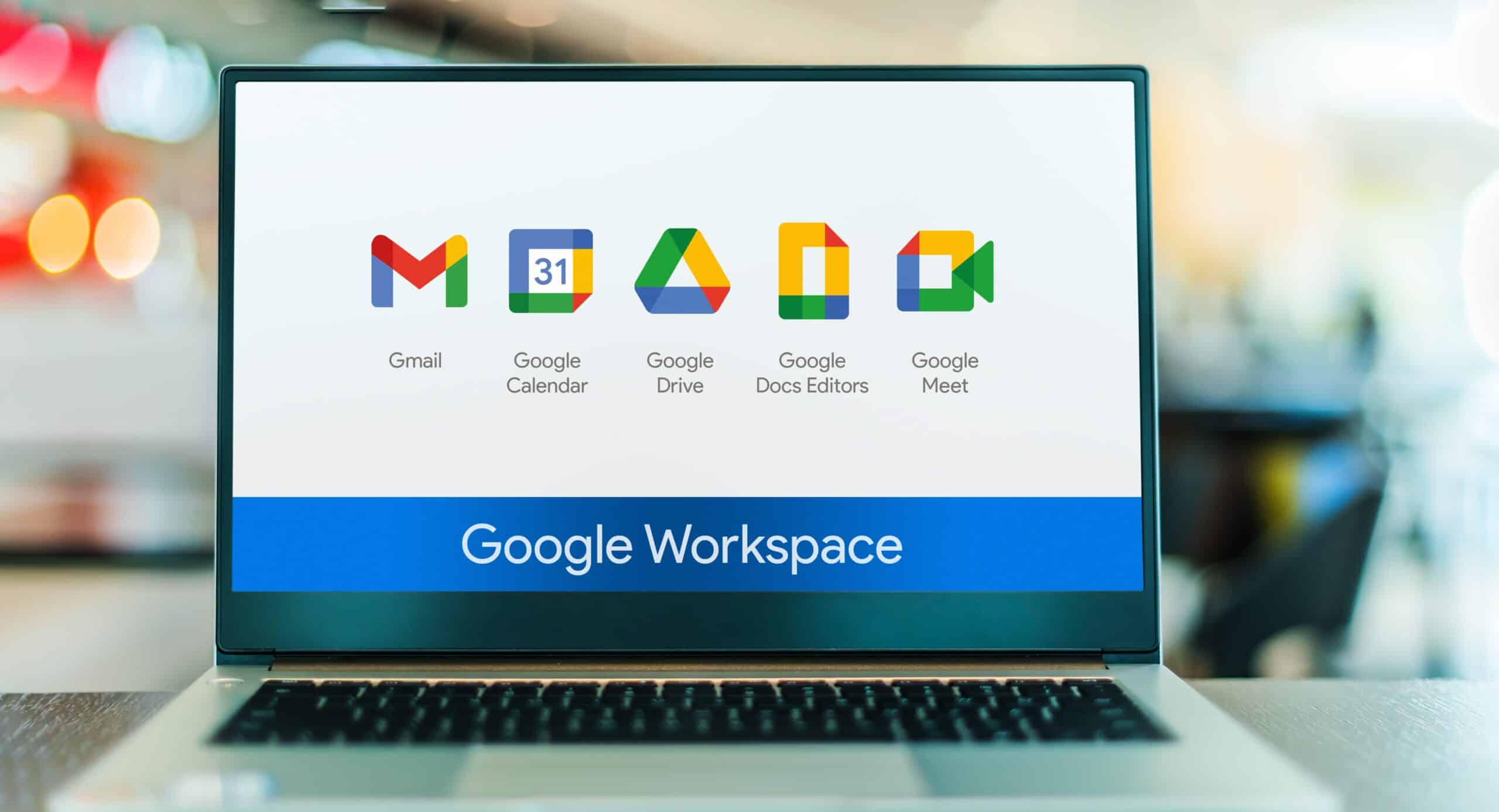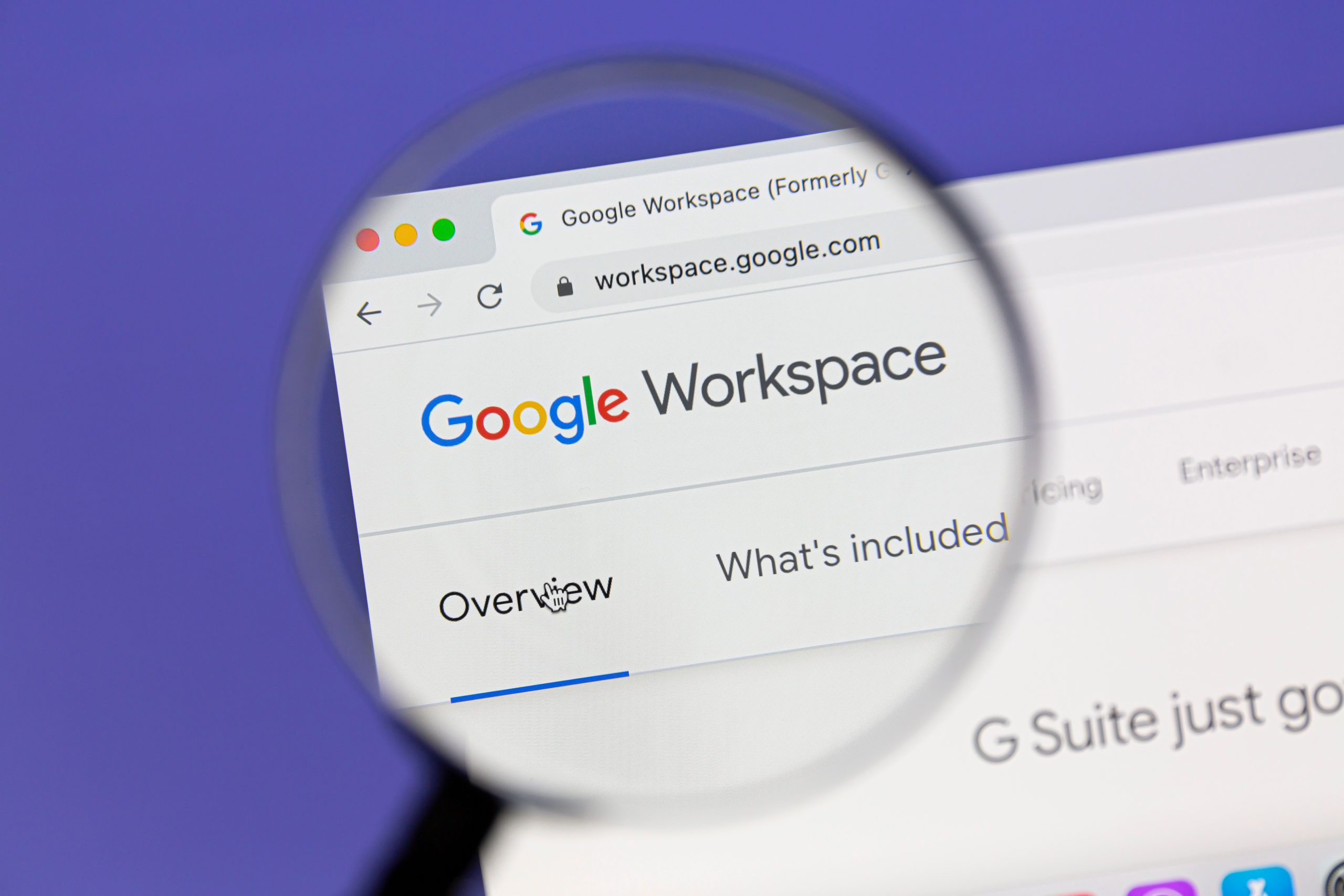Maximize Efficiency: Unleashing the Potential of Google Suite

Introduction
In the fast-paced world of modern business, efficiency is the cornerstone of success. T
he ability to communicate seamlessly, collaborate effortlessly, and manage tasks effectively is what sets thriving organizations apart.
The journey towards workplace efficiency has been marked by a remarkable evolution.
From traditional methods of communication to the digital revolution, each step has been a progression towards a more streamlined and interconnected work environment.
At the forefront of this evolution stands Google Suite, a comprehensive suite of applications poised to redefine how teams operate. It’s more than just a collection of tools; it’s a catalyst for productivity, a game-changer in workplace dynamics.
The Evolution of Workplace Efficiency
Workplace efficiency has come a long way from the days of handwritten memos and face-to-face meetings.
With the advent of technology, email emerged as the primary mode of communication.
However, the sheer volume of emails exchanged daily led to the realization that a more powerful and organized solution was needed.
This prompted the evolution towards integrated suites of applications that could seamlessly handle communication, collaboration, and task management. Google Suite is the culmination of this evolution, offering a unified platform where teams can work together in real-time, regardless of their physical location.
It represents a quantum leap forward in how organizations operate, making the most of technological advancements to enhance productivity.
Introducing Google Suite as a Game-Changer
Google Suite isn’t just a set of applications; it’s a revolution in how businesses function.
At its core is the belief that efficiency and productivity are the cornerstones of success.
It seamlessly integrates communication, collaboration, and organization in a way that empowers teams to do their best work.
Gmail, the cornerstone of Google Suite, transforms email from a basic communication tool into a dynamic platform for streamlined conversations. This is complemented by Google Chat, which facilitates real-time collaboration within teams.
The advanced features of Gmail further enhance efficiency, allowing for efficient email management.
This combination of tools makes Google Suite a true game-changer in the world of workplace productivity.
Part 1: Streamlined Communication
Gmail: More Than Email
Gmail has transcended its role as a mere email platform.
It’s a cornerstone of modern communication, offering a powerful array of features designed to streamline conversations.
With its intuitive interface, users can navigate their inboxes with ease, ensuring that important messages are never overlooked.
The robust search functionality allows for quick retrieval of critical information, and labels and filters provide a level of organization that is unparalleled.
Additionally, Gmail’s integration with other Google Suite applications ensures a seamless flow of communication within the entire ecosystem.
It’s more than just an email; it’s a gateway to efficient and organized correspondence.
Streamlining Communication with Gmail
Gmail’s user-friendly interface is designed to make communication effortless.
From composing messages to managing threads, every aspect is carefully crafted to optimize efficiency.
The inclusion of keyboard shortcuts and smart compose further accelerates the process, allowing users to navigate their inboxes with unprecedented speed. Additionally, Gmail’s mobile application ensures that users can stay connected and responsive, even while on the go.
This level of accessibility is crucial in today’s dynamic business environment, where quick responses can make all the difference.
With Gmail, communication is no longer a task to be managed; it’s a fluid and intuitive process that empowers teams to interact seamlessly.
Advanced Features for Efficient Email Management
Gmail’s capabilities extend far beyond basic email functions.
It introduces a range of advanced features that revolutionize email management.
The introduction of categories, such as Primary, Social, and Promotions, automatically filters incoming messages, ensuring that the most important emails take precedence.
Moreover, the integration of Google Drive allows for seamless file sharing directly from the email platform, eliminating the need for cumbersome attachments.
With features like scheduled sending and priority inbox, Gmail empowers users to take control of their inbox,
making email management an efficient and organized process.
Google Chat: Real-Time Collaboration
In today’s fast-paced work environment, real-time communication is essential.
This is where Google Chat steps in, providing a platform for instantaneous collaboration within teams.
With its intuitive interface, users can engage in one-on-one conversations or create dynamic group chats.
The integration with other Google Suite applications ensures that communication flows seamlessly, allowing teams to transition from conversation to action without missing a beat.
Google Chat not only enhances the speed of communication but also facilitates a more dynamic and interactive work environment.
Enhancing Team Communication with Google Chat
Google Chat redefines how teams communicate.
It offers a platform for instant messaging that goes beyond basic text. Users can share files, images, and links directly within the chat interface, eliminating the need for separate email threads. The ability to create rooms for specific projects or topics ensures that conversations are organized and easily ac
cessible.
Additionally, the integration of Google Meet allows for a seamless transition from chat to video conferencing, further enhancing collaboration.
Whether for quick clarifications or in-depth discussions, Google Chat provides the tools for teams to communicate effectively and efficiently.
Integrating Chat with Other Google Suite Apps
One of the key strengths of Google Suite is its seamless integration of applications, and Google Chat is no exception.
It serves as a central hub for communication, allowing users to transition effortlessly between different modes of interaction.
For example, within a chat conversation, users can share files directly from Google Drive, ensuring that relevant documents are readily accessible.
Moreover, the integration with Google Calendar enables users to schedule meetings directly from the chat interface, streamlining the coordination process. This level of integration ensures that communication is not isolated but is an integral part of the broader collaborative ecosystem offered by Google Suite.
Part 2: Empowering Collaboration
Google Docs: Beyond Word Processing
Google Docs revolutionizes document creation and collaboration.
It’s not just a word processing tool; it’s a dynamic platform for teams to work together in real-time. Multiple users can edit a document simultaneously, making brainstorming sessions seamless.
Furthermore, the integrated commenting feature allows for constructive feedback without altering the original content.
One of its most powerful features is version control, which ensures that every change is tracked, enabling teams to revert to earlier versions if needed.
With Google Docs, document collaboration transcends traditional word processing, becoming a dynamic and interactive process.
Collaborative Document Creation with Google Docs
Google Docs transforms the way teams create documents.
The real-time editing feature means that multiple team members can work on the same document simultaneously, eliminating the need for back-and-forth exchanges. This is particularly valuable for projects that require input from various stakeholders.
Additionally, the platform’s accessibility ensures that team members can work together regardless of their physical location.
Whether it’s drafting reports, creating proposals, or brainstorming ideas, Google Docs provides a platform for seamless collaboration and content creation.
Version Control and Real-Time Editing Features
One of the most significant advantages of using Google Docs is its robust version control and real-time editing capabilities. Every edit is tracked, allowing team members to see who made what changes and when.
This not only facilitates transparency but also ensures accountability within the team.
The comment feature enables users to provide feedback on specific sections, making the revision process more targeted and efficient.
With version history, teams can access and restore earlier versions of a document, providing a safety net for creative exploration.
Google Sheets: Data Management Excellence
Google Sheets revolutionizes data management and analysis.
It’s a collaborative spreadsheet tool that empowers teams to work on data-driven projects in real-time.
Multiple users can input and analyze data simultaneously, making it an invaluable tool for tasks such as financial planning, project tracking, and data visualization.
Functions and formulas automate complex calculations, saving time and minimizing errors.
With features like conditional formatting and pivot tables, Google Sheets transforms data into actionable insights, making it an indispensable tool for teams working with numbers.
Collaborative Data Analysis with Google Sheets
Google Sheets takes data analysis to the next level.
It allows multiple team members to collaborate on the same dataset in real-time, ensuring that insights are derived collectively. The platform’s formula language and functions provide a powerful toolkit for data manipulation and analysis.
From basic arithmetic calculations to complex statistical operations, Google Sheets caters to a wide range of analytical needs.
Moreover, the platform’s integration with other Google Suite applications facilitates seamless data sharing and reporting, making it an essential tool for data-driven decision-making.
Functions, Formulas, and Data Visualization Tools
Google Sheets offers a rich library of functions and formulas that empower users to perform complex calculations with ease. From simple arithmetic operations to advanced statistical functions, Google Sheets provides the tools needed to process and analyze data effectively.
Additionally, the platform offers a range of data visualization tools, including charts and graphs, that allow teams to present their findings in a visually compelling manner.
This not only enhances the clarity of communication but also enables stakeholders to grasp insights quickly.
With Google Sheets, data becomes a powerful asset, driving informed decision-making within the organization.
Part 3: Engaging Presentations
Google Slides: Dynamic Presentations
Google Slides is a dynamic presentation tool that goes beyond traditional slide decks.
It’s a platform for crafting engaging and interactive presentations that captivate audiences. With a wide array of templates and design features, Google Slides allows teams to create visually stunning presentations that leave a lasting impression.
The real-time collaboration feature ensures that multiple team members can work on the same presentation simultaneously, saving time and ensuring a cohesive final product.
Whether it’s for client pitches, team meetings, or workshops, Google Slides empowers teams to deliver presentations that resonate.
Crafting Dynamic Presentations with Google Slides
Google Slides offers a range of features that allow teams to create presentations that truly stand out.
The intuitive interface makes it easy to add text, images, and multimedia elements, enabling presenters to convey their message effectively.
The platform’s design tools and templates provide a professional polish, ensuring that presentations look polished and cohesive.
Moreover, the real-time collaboration feature means that multiple team members can contribute to the same presentation simultaneously, allowing for a seamless merging of ideas and content.
With Google Slides, presentations become a powerful tool for communication and engagement.
Collaboration Features for Group Presentations
One of the key strengths of Google Slides is its ability to facilitate group presentations.
With features like presenter notes, multiple presenters can seamlessly transition between different sections of the presentation, ensuring a smooth and engaging delivery.
Additionally, the platform’s integration with Google Meet enables teams to conduct virtual presentations with ease.
This is particularly valuable in today’s remote work environment, where virtual meetings have become the norm.
Whether it’s a sales pitch, a training session, or a company-wide update, Google Slides provides the tools for teams to deliver group presentations that captivate and inform.
Google Drawings: Visualizing Ideas
Google Drawings offers a canvas for teams to visually communicate their ideas.
It’s a versatile tool that allows for the creation of diagrams, flowcharts, and visual content.
Whether it’s illustrating processes, creating organizational charts, or designing infographics, Google Drawings provides the platform to bring ideas to life.
The platform’s intuitive drawing tools and shape library make it easy to create visually compelling graphics.
Additionally, Google Drawings seamlessly integrates with other Google Suite applications, allowing for the easy embedding of visuals into documents, presentations, and websites.
Designing Visual Content with Google Drawings
Google Drawings provides a user-friendly platform for designing visual content.
The platform’s intuitive interface makes it accessible to users of all design levels, allowing them to create graphics that enhance presentations and documents.
From creating custom icons to designing informative diagrams, Google Drawings provides a range of tools to bring ideas to fruition.
The ability to collaborate in real-time means that teams can collectively refine and iterate on visuals, ensuring that they align with the overall message and goals of the presentation.
With Google Drawings, visual content becomes a powerful asset in effective communication.
Integrating Drawings for Enhanced Communication
Google Drawings seamlessly integrates with other Google Suite applications, enhancing the overall communication process.
Visuals created in Google Drawings can be easily embedded into documents, presentations, and websites, adding a dynamic layer to content.
This integration ensures that visuals are not isolated but are an integral part of the broader communication ecosystem offered by Google Suite.
Whether it’s adding an illustrative diagram to a report or incorporating custom visuals into a presentation, Google Drawings empowers teams to communicate their ideas in a visually compelling manner.
Part 4: Organized File Management
Google Drive: Cloud-Powered Organization
Google Drive revolutionizes file management by harnessing the power of the cloud.
It provides a centralized platform for storing, accessing, and collaborating on files from anywhere, at any time.
With a generous storage capacity, teams can bid farewell to the constraints of physical storage devices.
Moreover, the seamless integration with other Google Suite applications ensures that files are easily accessible across the entire ecosystem.
Google Drive is more than just a storage solution; it’s an organizational powerhouse that empowers teams to manage their files with unparalleled efficiency.
Efficient File Management and Storage with Google Drive
Google Drive sets a new standard for file management.
It offers an intuitive interface that allows users to organize files and folders with ease. The robust search functionality ensures that locating specific documents is a breeze, even in vast repositories.
With the ability to preview files without opening them, users can quickly assess content without the need for extensive downloads.
Additionally, the automatic sync feature means that files are updated in real-time, ensuring that teams are always working with the latest version.
Google Drive is a game-changer in how organizations manage their digital assets.
Sharing and Collaborating on Files and Folders
Collaboration lies at the heart of Google Drive’s functionality.
It allows multiple users to work on the same document simultaneously, eliminating the need for cumbersome version control.
The sharing settings provide granular control over who can view, edit, or comment on files, ensuring that sensitive information remains secure.
Furthermore, the comment feature allows for contextual feedback, streamlining the revision process.
With the ability to integrate with Gmail, sharing files via email becomes a seamless process.
Google Drive fosters a culture of collaboration, ensuring that teams can work together efficiently, regardless of their physical location.
Google Calendar: Scheduling Made Simple
Google Calendar is a dynamic tool for managing events, meetings, and deadlines. Its intuitive interface allows users to create and manage events with ease.
The integration with Gmail ensures that invitations and event updates are seamlessly communicated to attendees.
Additionally, Google Calendar’s color-coding and categorization features provide a visual snapshot of a team’s schedule, making it easy to identify busy periods and available slots.
With the ability to set reminders and receive notifications, teams can stay on top of their schedules, ensuring that important events are never overlooked.
Streamlining Event Planning with Google Calendar
Google Calendar simplifies the process of event planning.
The platform’s scheduling assistant suggests optimal meeting times based on the availability of attendees, eliminating the need for back-and-forth coordination.
This feature is particularly valuable for organizing meetings with external stakeholders or clients.
Moreover, the integration with Google Meet allows for a seamless transition from scheduling to video conferencing, ensuring that virtual meetings are conducted with ease.
Google Calendar not only streamlines event planning but also ensures that teams can make the most of their valuable time.
Integration with Gmail and Other Productivity Apps
One of the key strengths of Google Calendar is its seamless integration with other Google Suite applications.
Events and appointments created in Google Calendar automatically sync with Gmail, ensuring that attendees are promptly notified.
This integration streamlines the communication process, ensuring that everyone involved is on the same page.
Additionally, the integration with Google Drive allows for easy attachment of files to event invitations, providing context and relevant information.
Google Calendar serves as a central hub for scheduling and event management, ensuring that teams can make the most of their collaborative efforts.
Part 5: Collaborative Workspaces
Google Sites: Building Knowledge Bases
Google Sites empowers teams to create internal knowledge bases and informational websites. It’s a user-friendly platform that requires no coding or design expertise.
With a range of templates and customization options, teams can build informative sites that serve as centralized hubs of knowledge.
This is particularly valuable for onboarding new team members, as well as for providing resources and documentation.
The ability to embed multimedia content and integrate with other Google Suite applications adds a dynamic layer to the knowledge-sharing process.
Google Sites transforms information into accessible and interactive resources.
Creating Informative Internal Websites with Google Sites
Google Sites provides a platform for teams to create informative internal websites that serve as repositories of knowledge.
The intuitive drag-and-drop interface allows for the easy arrangement of content, ensuring that information is presented in a clear and organized manner.
From training materials to company policies, Google Sites provides a versatile canvas for sharing critical resources.
Moreover, the platform’s integration with Google Drive enables teams to seamlessly attach files and documents, ensuring that all relevant information is readily accessible.
With Google Sites, teams can transform information into interactive resources that empower every member.
Customization and Embedding Features for Unique Workspaces
Google Sites offers a range of customization features that allow teams to tailor their websites to their unique needs and branding.
From choosing fonts and colors to adding logos and images, teams can create sites that reflect their identity. Additionally, the platform’s embedding features enable the integration of multimedia content, further enhancing the richness of the site’s content.
This means that teams can incorporate videos, presentations, and interactive elements, adding a dynamic layer to the information-sharing process.
Google Sites provides the flexibility to create websites that not only inform but also engage.
Google Classroom: Virtual Learning Environments
Google Classroom revolutionizes education and training by providing a virtual learning environment that empowers educators and trainers.
It serves as a centralized platform for distributing assignments, facilitating discussions, and providing resources.
Educators can create classes, enroll students, and track progress seamlessly. The integration with other Google Suite applications means that educational materials are easily accessible and can be seamlessly integrated into lessons.
Whether it’s for traditional education, employee training, or workshops, Google Classroom provides a powerful tool for creating engaging and effective learning experiences.
Facilitating Education with Google Classroom
Google Classroom empowers educators to create structured and engaging learning experiences for their students. I
t allows for the distribution of assignments, quizzes, and resources in an organized manner.
Educators can provide timely feedback and track student progress, ensuring that learning objectives are met.
The platform’s announcement feature enables seamless communication with students, keeping them informed of important updates and deadlines.
Additionally, the integration with Google Drive means that educational materials can be easily attached to assignments, providing context and relevant resources.
With Google Classroom, educators can create a virtual classroom environment that fosters active learning and collaboration.
Assignments, Grading, and Effective Communication for Educators
Google Classroom streamlines the process of assigning and grading work.
Educators can create assignments, set due dates, and even assign grades directly within the platform.
This eliminates the need for manual tracking and grading, saving educators valuable time. The platform’s grading features allow for constructive feedback, ensuring that students receive actionable insights to enhance their learning.
Additionally, the comment feature enables personalized communication, fostering a supportive learning environment.
With Google Classroom, educators have the tools to not only assign work but also to provide meaningful feedback and support to their students.
Part 6: Security and Administration
Google Admin Console: Ensuring Data Integrity
The Google Admin Console serves as the control center for managing Google Suite within an organization.
It allows administrators to manage user accounts, configure security settings, and enforce policies. This ensures that data within the organization is secure and compliant with internal policies and external regulations.
The console provides granular control over user access and permissions, enabling administrators to tailor access levels to specific roles and responsibilities.
Moreover, the console serves as a central hub for monitoring user activity, providing valuable insights into how Google Suite is utilized within the organization.
Managing User Accounts and Security Settings with Admin Console
The Google Admin Console empowers administrators to manage user accounts with precision.
From creating new accounts to managing permissions, administrators have full control over user access to Google Suite services.
This level of granularity ensures that each user has the appropriate level of access to perform their role effectively.
Additionally, the console provides robust security settings, including options for two-factor authentication and password policies.
This ensures that data remains secure and that best practices are followed in user account management.
The Admin Console is a critical tool for maintaining the integrity of an organization’s digital infrastructure.
Monitoring Data Security Within the Organization
Data security is paramount, and the Google Admin Console provides the tools needed to monitor and safeguard sensitive information.
Administrators can track user activity, ensuring that any unusual behavior is promptly identified and addressed.
Additionally, the console provides insights into which files and documents are being accessed and shared, allowing for a proactive approach to data security.
This level of visibility empowers organizations to stay ahead of potential security threats and to take swift action to protect their data assets. With the Admin Console, organizations can have confidence in the security of their digital ecosystem.
Security Best Practices: Safeguarding Your Workspace
The Admin Console offers a range of security best practices that organizations can implement to safeguard their workspace.
This includes enabling two-factor authentication, which adds an extra layer of security by requiring users to verify their identity through a secondary method.
Additionally, the console provides options for encryption and privacy settings, ensuring that data is protected both in transit and at rest.
By following these best practices, organizations can significantly enhance the security of their Google Suite environment, providing a robust defense against potential threats.
Tips for Data Security and Threat Protection
The Admin Console provides valuable tips and recommendations for data security and threat protection. This includes guidance on identifying phishing attempts and suspicious activity, as well as steps to take in the event of a security incident.
By following these tips, organizations can educate their users on best practices for maintaining a secure digital workspace.
This proactive approach to security awareness empowers users to be vigilant and to play an active role in protecting the organization’s data assets.
Implementing Two-Factor Authentication and Encryption
Two-factor authentication (2FA) and encryption are critical components of a comprehensive security strategy.
The Admin Console provides the tools to easily implement 2FA, adding an extra layer of protection to user accounts.
Additionally, the console offers options for encryption, ensuring that sensitive data is secure, both in transit and at rest.
By enabling these security measures, organizations can significantly reduce the risk of unauthorized access and data breaches.
The Admin Console empowers organizations to take proactive steps towards a more secure digital environment.
Conclusion
Recap of the Power of Google Suite Empowering Teams to Streamline Workflows
Google Suite stands as a transformative force in the modern workplace, revolutionizing the way teams collaborate, communicate, and manage their work.
From streamlined communication with Gmail to dynamic presentations with Google Slides, every tool within the suite is designed to elevate productivity and drive meaningful results.
Google Suite empowers organizations to not only work more efficiently but also to unlock new levels of creativity and innovation.
In the realm of education, Google Classroom provides a platform for educators to create engaging and interactive learning experiences, transcending traditional classrooms.
It puts the power of technology in the hands of educators, enabling them to foster a dynamic learning environment.
Administrators, armed with the Google Admin Console, have the tools they need to ensure the integrity and security of their digital ecosystem.
With granular control over user accounts and security settings, organizations can have confidence in the protection of their sensitive data.
As organizations continue to navigate the demands of a rapidly evolving digital landscape, Google Suite remains a steadfast partner in the journey toward productivity, collaboration, and success.
By embracing the full potential of Google Suite, teams can not only meet the challenges of the modern workplace but also thrive in it.
Empowering Teams to Streamline Workflows
In the fast-paced world of business and education, efficiency is the key to success.
Google Suite equips teams with the tools they need to streamline workflows, collaborate seamlessly, and achieve more.
It’s more than a suite of applications; it’s a catalyst for innovation and a driver of productivity.
By harnessing the full power of Google Suite, organizations and educators alike can unlock new levels of potential and take their endeavors to greater heights.



